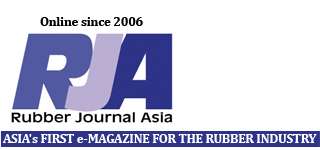![]() THE global market for silicones is forecast to reach US$17.2 billion by 2017, driven by booming markets of construction, automotive, healthcare and chemical, says a new report from Global Industry Analysts.
THE global market for silicones is forecast to reach US$17.2 billion by 2017, driven by booming markets of construction, automotive, healthcare and chemical, says a new report from Global Industry Analysts.
Asia, particularly China, has proven to be a major growth vehicle, with installation of new facilities, increasing
foreign investments and flourishing end-use industries making it an attractive silicones market. The region is poised to race ahead of others at the overall fastest CAGR of over 5% through to 2017.
In end-use applications, the construction sector rules the market in terms of size and demand and a robust growth rate. Silicone alkyds offer excellent adhesion to wood, steel, bridges, tanks and other architectural
constructions.
In healthcare, technological innovations, compatibility with long term implantable devices, resistance to bacteria, bio-compatibility and emergence as a drug eluting product will further boost silicone usage.
Globally, environmental concerns are increasingly leading to a decline in the consumption of solventbased
products. This has proven to be a boon for the silicones market, where a major trend is the increased adoption of solventless thermal-curing silicones.
Europe employs a sizeable 75% share of solventless silicone coatings while countries like Taiwan, Japan and
South Korea have also witnessed a definite shift towards this technology. Silicone coatings offer
thermal, mechanical and physical gas barrier capabilities and are used in inflatable fabrics for
various military, consumer and space applications, including parachutes,airbags, boat sails, inflatable shelters and rafts.
Meanwhile, the liquid silicone rubber (LSR) market is developing, owing to advancements in equipment and materials and a shift in applications of the material. OEMs are finding ways to replace LSR, particularly in the
medical market. Key participants in the silicones market include China National Chemical Corporation, Bluestar
Silicones International, Dow Corning, Evonik Industries, Momentive Performance Materials, NuSil Technology,
Shin-Etsu Chemical, SiVance and Wacker Chemie. (PRA)
